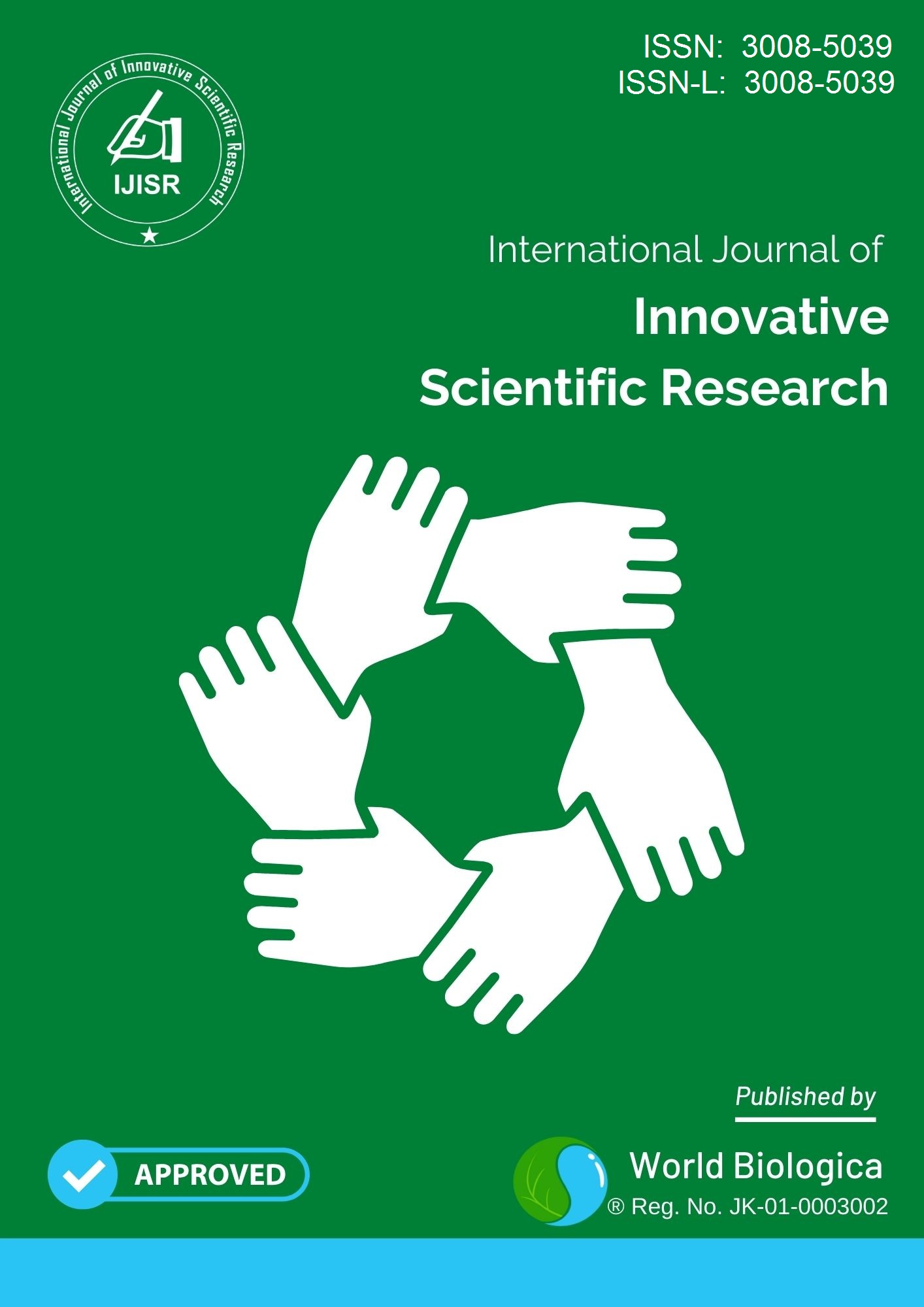Artificial Intelligence & Quantum Computing for Causal Loop and Chronology Violation Detection
A Deep Learning Approach to Predicting Traversable Wormhole Stability and Temporal Paradoxes
Keywords:
AI-Assisted Numerical Relativity, Wormhole Stability Prediction, Chronology Protection Mechanisms, Closed Timelike Curves (CTCs), Physics-Informed Neural Networks (PINNs)Abstract
As admissible solutions to Einstein’s field equations, traversable wormholes present the prospect of non-trivial topological structures tying disparate areas of spacetime together. Their stability is seriously questioned because their theoretical existence, which is determined by the Morris-Thorne metric, requires the inclusion of exotic matter that violates the energy conditions. These structures also allow for the creation of closed timelike curves (CTCs), which could violate causality and cause paradoxes, undermining the basic tenets of chronology protection. Although different gravity models and semiclassical quantum effects suggest ways to maintain wormholes, it is still unclear how to precisely formulate stability criteria and causal consistency. In order to predict wormhole stability and identify the emergence of causal loops, this study makes use of deep learning techniques and artificial intelligence (AI). In order to evaluate the effect of exotic matter distributions on stability, Einstein’s field equations are numerically solved using Physics-Informed Neural Networks (PINNs) under dynamic boundary conditions. Potential CTC formations and self-consistency violations are detected by tracing geodesic structures using Graph Neural Networks (GNNs), Quantum Neural Network (QNNs)and Recurrent Neural Networks (RNNs). Furthermore, the exotic matter configuration is optimised via reinforcement learning (RL) techniques to minimise instabilities while maintaining traversability. This research advances the intersection of machine learning, general relativity, and quantum field theory in the study of spacetime topology and causality, analyses chronology protection mechanisms, and evaluates wormhole viability by fusing relativistic physics with AI-driven computational techniques.
Downloads
References
Radhakrishnan, R., Brown, P., Matulevich, J., Davis, E., Mirfendereski, D., & Cleaver, G. (2024). A Review of Stable, Traversable Wormholes in f(R) Gravity Theories. Symmetry, 16(8), 1007. https://doi.org/10.3390/sym16081007
Youvan, Douglas. (2024). Exploring Closed Timelike Curves: Theoretical Implications and Practical Challenges in Time Travel Physics. 10.13140/RG.2.2.36103.10408.
Reyna, Joseph. (2024). AI Integration for Time Travel and Space-Time Manipulation Research. 10.13140/RG.2.2.29700.13446
Samar Hadou, Charilaos I. Kanatsoulis, Alejandro Ribeiro. (2021). Space-Time Graph Neural Networks. Cornell University. arXiv:2110.02880
Galina Weinstein. (2013). Einstein’s 1916 derivation of the Field Equations. https://arxiv.org/pdf/1310.6541
Lemos, José & Lobo, Francisco & Oliveira, Sérgio. (2003). Morris-Thorne wormholes with a cosmological constant. Physical Review D. 68. 064004. 10.1103/PhysRevD.68.064004.
Kontou, E.-A. (2024). Wormhole Restrictions from Quantum Energy Inequalities. Universe, 10(7), 291. https://doi.org/10.3390/universe10070291
Kar, S., & Sengupta, S. (2007). The Raychaudhuri equations: A brief review. Pramana – Journal of Physics, 69(1), 49–76. Indian Academy of Sciences. https://doi.org/10.1007/s12043-007-0110-9
Thorne, K. S. (1992). Closed timelike curves. In Proceedings of the 13th International Conference on General Relativity and Gravitation (Part 1, Plenary Lectures, p. 295). Córdoba, Argentina.
Sfetcu, Nicolae. (2019). Causal Loops in Time Travel. 10.13140/RG.2.2.17802.31680
Solnyshkov, D. D., & Malpuech, G. (2020). Analogue time machine in a photonic system. Institut Pascal, PHOTON-N2, Université Clermont Auvergne, CNRS, SIGMA Clermont, Institut Universitaire de France.
Dejonghe, Richard & Frey, Kimberly & Imbo, Tom. (2009). Discontinuous quantum evolutions in the presence of closed timelike curves. Physical Review D. 81. 10.1103/PhysRevD.81.087501.
Hawking, S. W. (1992). Chronology protection conjecture. Physical Review D, 46(2), 603–611. https://doi.org/10.1103/PhysRevD.46.603
He, YH. (2024). AI-driven research in pure mathematics and theoretical physics. Nat Rev Phys 6, 546–553. https://doi.org/10.1038/s42254-024-00740-1
Durrani, Ijaz. (2024). AI Investigates Quantum Mechanics from General Relativity. 10.13140/RG.2.2.19998.96320.
Harcombe, L., & Deng, Q. (2023). Physics-informed neural networks for discovering localised eigenstates in disordered media, Journal of Computational Science, Volume 73, 102136, ISSN 1877-7503, https://doi.org/10.1016/j.jocs.2023.102136
Quiza, Ramon & Davim, J. Paulo. (2011). Combining the finite element method and artificial intelligence in manufacturing modeling and optimization.
Valamontes, Antonios. (2024). The Casimir Effect in Detail. SSRN Electronic Journal. 10.2139/ssrn.4886999.
Bonate, Peter. (2001). A Brief Introduction to Monte Carlo Simulation. Clinical pharmacokinetics. 40. 15-22. 10.2165/00003088-200140010-00002.
Sharma, Himanshu. (2019). HPC-Enhanced Training of Large AI Models in the Cloud. 10.13140/RG.2.2.28004.59521.
Wani, Aasim Ayaz. (2025). Advancing Material Stability Prediction: Leveraging Machine Learning and High-Dimensional Data for Improved Accuracy. Materials Sciences and Applications. 16. 79-105. 10.4236/msa.2025.162005.
Chen, ZC., Liu, L. (2024). Detecting a gravitational wave background from inflation with null energy condition violation: prospects for Taiji. Eur. Phys. J. C 84, 1176 (2024). https://doi.org/10.1140/epjc/s10052-024-13529-4
Brun, Todd. (2003). Computers with Closed Timelike Curves Can Solve Hard Problems Efficiently. Foundations of Physics Letters. 16. 245-253. 10.1023/A:1025967225931
Downloads
-
Download PDF
 Abstract Views: 569,
Abstract Views: 569,  Download PDF: 133
Download PDF: 133
Published
Issue
Section
License
Copyright (c) 2025 International Journal of Innovative Scientific Research

This work is licensed under a Creative Commons Attribution-ShareAlike 4.0 International License.

















